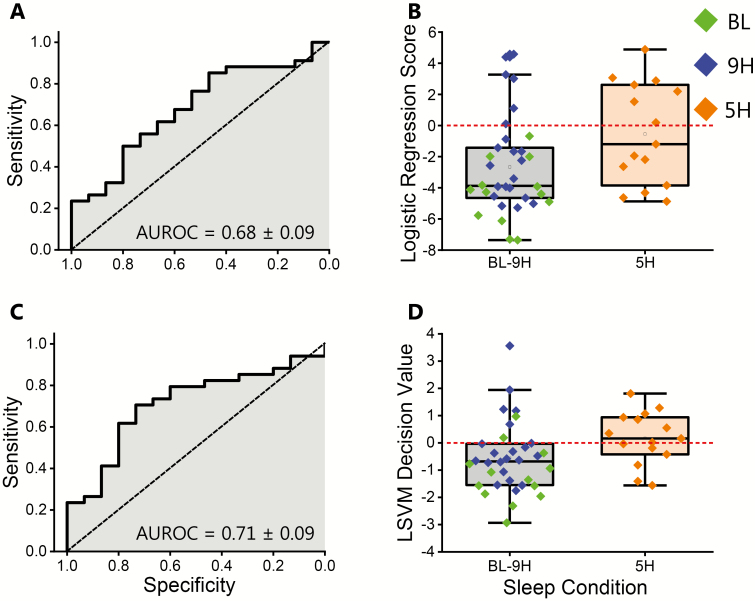Figure 2.
Top-performing biomarker models that include and exclude compounds with 24-hour time-of-day patterns. (A) Receiver operator characteristic plot for the top-performing biomarker model that included compounds with 24-hour time-of-day patterns (logistic regression model). (B) Box plot of the logistic regression scores for all samples in the validation dataset for the logistic regression biomarker model that included compounds with 24-hour time-of-day patterns. Note that the logistic regression scores were multiplied by −1 so that positive values were classified as insufficient sleep. (C) Receiver operator characteristic plot for the top-performing biomarker model that excluded compounds with 24-hour time-of-day patterns (support vector machine model). (D) Box plot of the decision values for all samples in the validation dataset for the support vector machine biomarker model that excluded compounds with 24-hour time-of-day patterns. Positive values were classified as insufficient sleep. BL, baseline condition; 9H, control condition; 5H, insufficient sleep condition; AUROC, area under the receiver operator characteristic plot.

